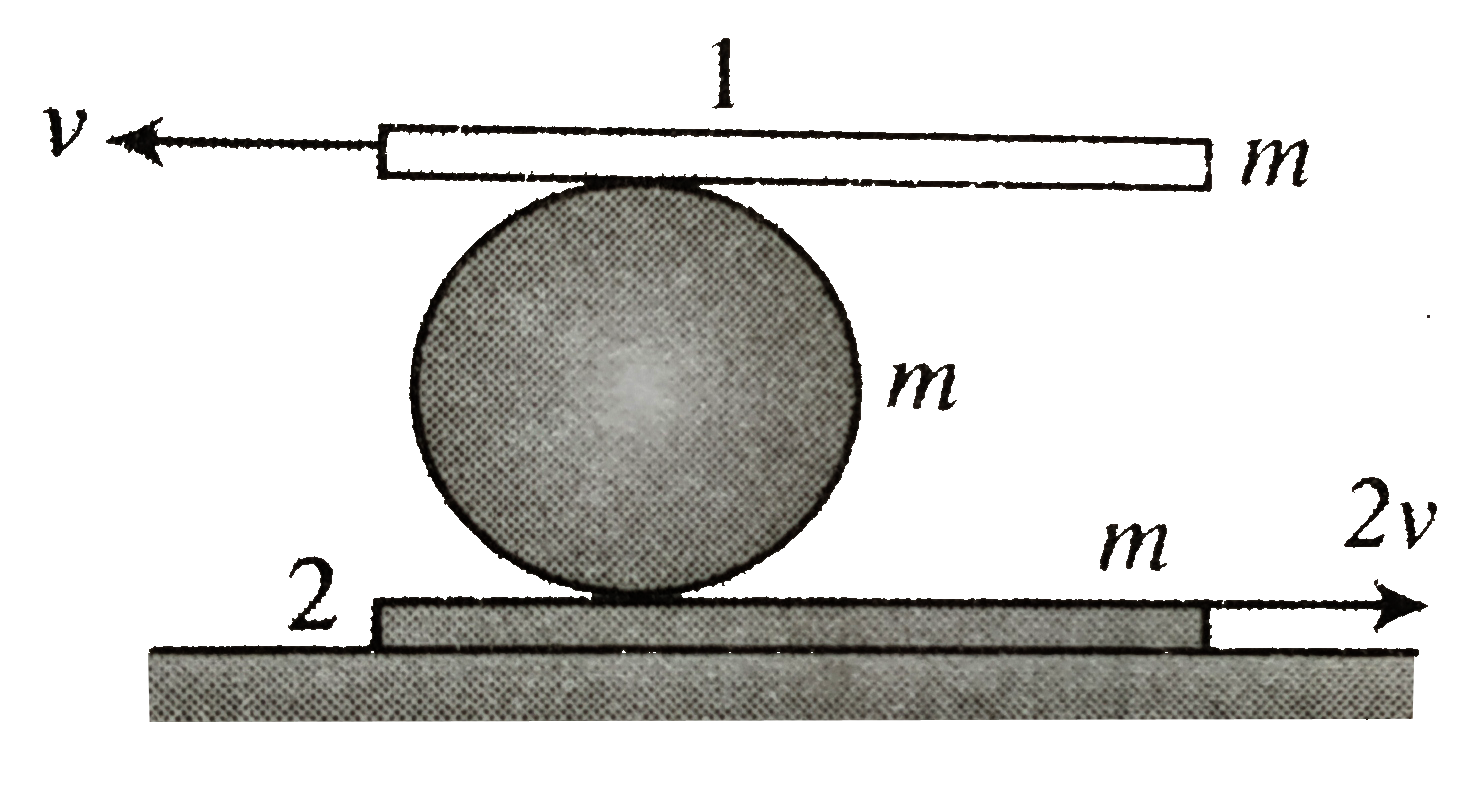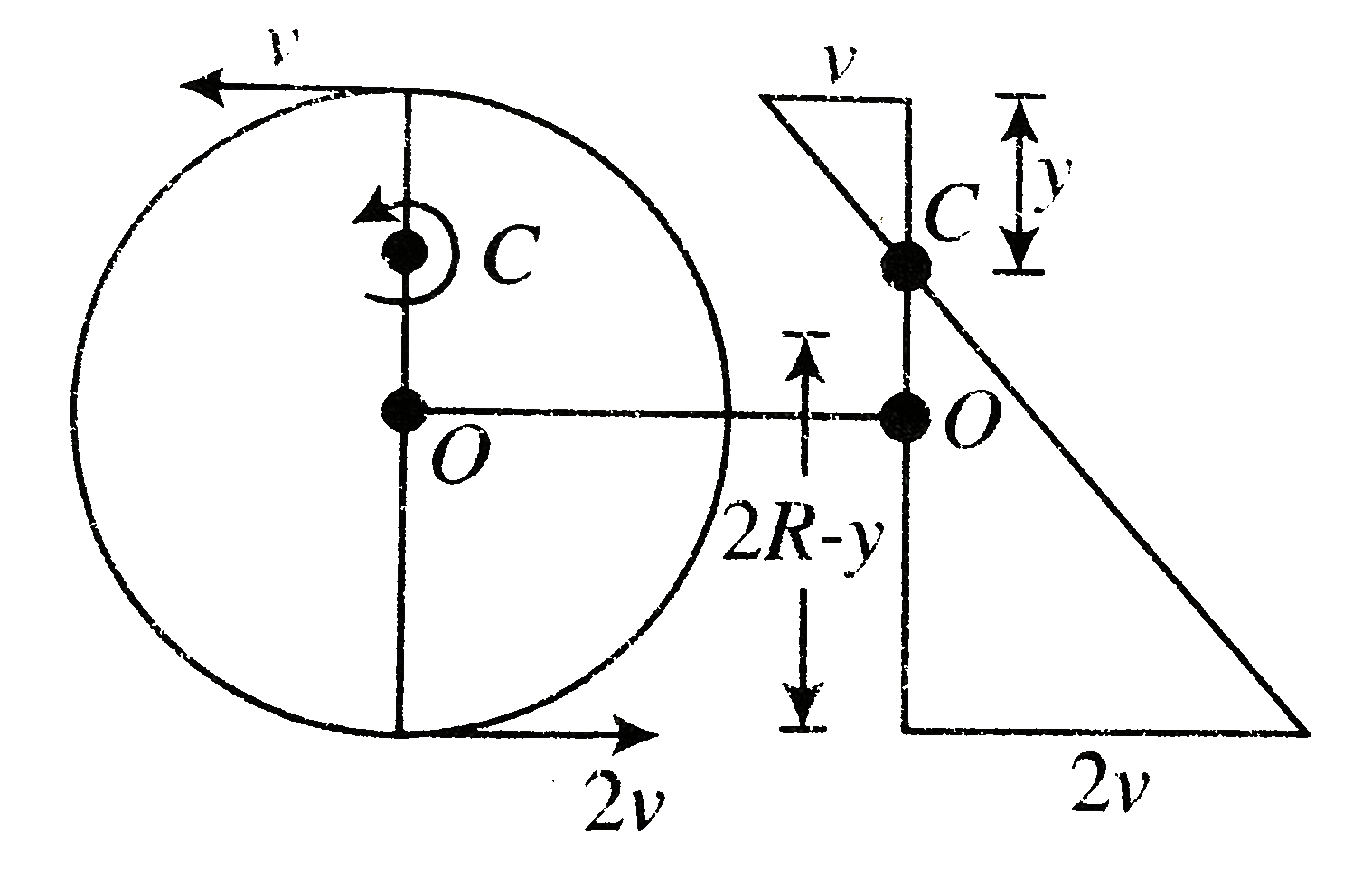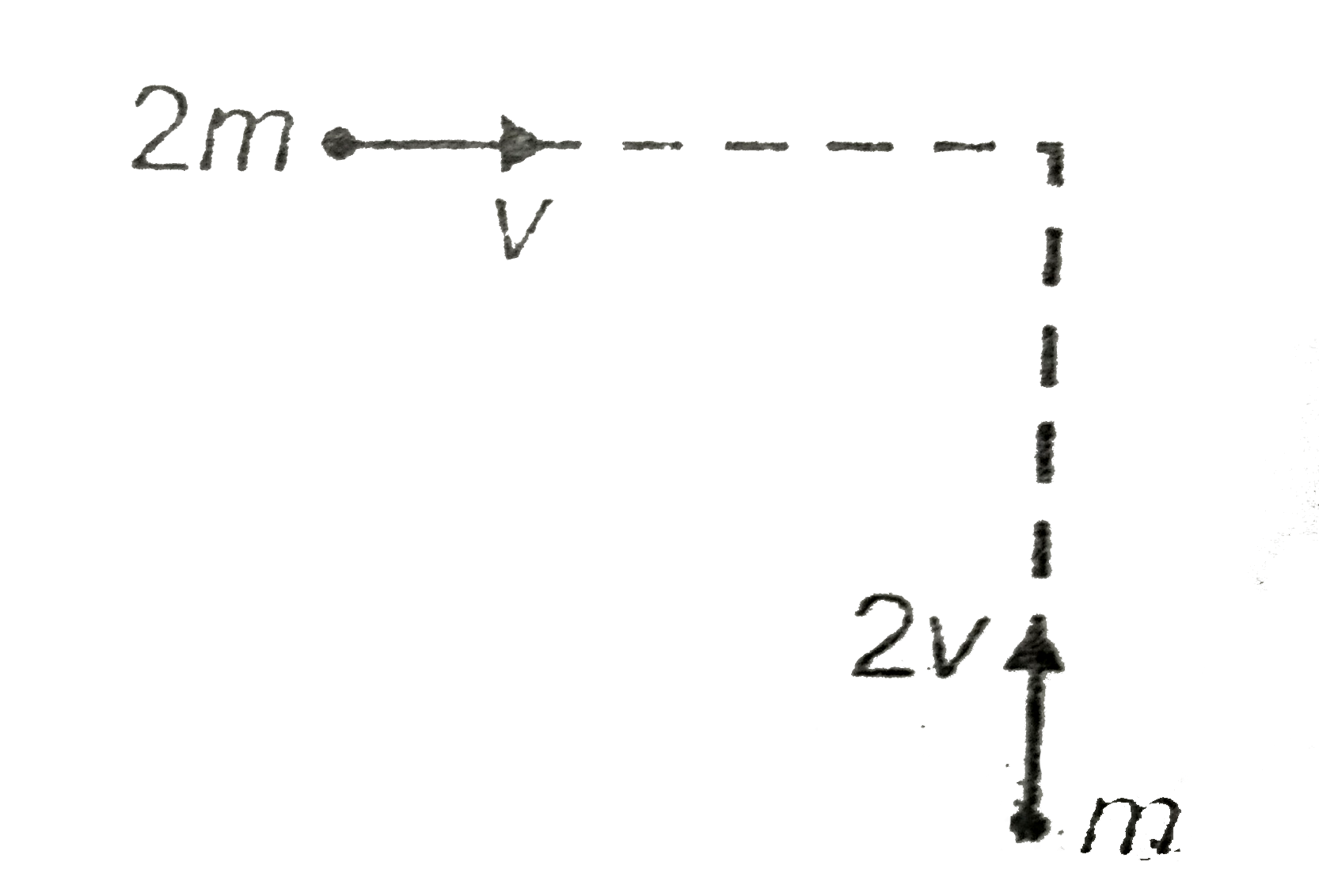Two plates 1 and 2 move with velocities −v and 2v respectively. If the sphere does not slide relative to the plates, assuming the masses of each body as m, find the kinetic energy of the system (plates+sphere).

Top point of sphere in having velocity v(←) and bottom point in moving with 2v(→)
We can find position of IRC
yv=2R−y2v=y=23R

Hence we can assure the sphere will have pure rotation about C(ICR)
Hence the motion sphere can be considered as pure rotation about C.
The angular velocityi of shere ω=vy=3v2R
The kinetic energy of sphere krotation=12ICω2
⇒krotatioal=12[25mR2+m(OC)2]ω2
OC=R−23R=R3
Krotational=12(2345mR2)ω2=2390mω2R2
=2390m(3v2R)2R2=2340mv2
Hence total kinetic energy
Ktotal=12mv2+12m(2v)2+2340mv2=12340mv2
Topper's Solved these Questions
- RIGID BODY DYNAMICS 2BOOK - CENGAGE PHYSICSCHAPTER - RIGID BODY DYNAMICS 2EXERCISE - Solved Examples
12 Videos
- RIGID BODY DYNAMICS 2BOOK - CENGAGE PHYSICSCHAPTER - RIGID BODY DYNAMICS 2EXERCISE - Exercise 3.1
11 Videos
- RIGID BODY DYNAMICS 1BOOK - CENGAGE PHYSICSCHAPTER - RIGID BODY DYNAMICS 1EXERCISE - Integer
11 Videos
- SOUND WAVES AND DOPPLER EFFECTBOOK - CENGAGE PHYSICSCHAPTER - SOUND WAVES AND DOPPLER EFFECTEXERCISE - Integer
16 Videos
Similar Questions
Two particles having masses m1andm2 are moving with velocities →V1and→V2 respectively. →V0 is velocity of centre of mass of the system.
(a) Prove that the kinetic energy of the system in a reference frame attached to the centre of mass of the system is KEcm=12μV2rel. Where μ=m1m2m1+m2 and Vrel is the relative speed of the two particles.
(b) Prove that the kinetic energy of the system in ground frame is given by
KE=KEcm+12(m1+m2)V20
(c) If the two particles collide head on find the minimum kinetic energy that the system has during collision.
View SolutionTwo particles of mass 2m and m moving with speed v and 2v respectively perpendicular to each other collides perfectly inelastically, then

Loss in kinetic energy of the system
View Solution
Knowledge Check
Two identical particles move towards each other with velocity 2v and v respectively. The velocity of centre of mass is
AvBv3Cv2Dzero.Two identical particles move towards each other with velocity 2v and v respectively. The velocity of centre of mass is
AVBV/3CV/2DZeroTwo identical particles move towards each other with velocity 2v and v, respectively. The velocity of the centre of mass is:
AvBv/3Cv/2Dzero
A particle of mass m moving with velocity 2v collides with another particle of mass 3m moving with velocity v in the same direction.If it is perfect inelastic collision,the loss of kinetic energy of the system is
View SolutionTwo masses, m1 and m2 , are moving with velocities v1 and v2. Find their total kinetic energy in the reference frame of centre of mass.
View SolutionTwo objects having same mass 'm' are moving with velocities v and 2v. Find ratio of their kinetic energies.
View SolutionA rod of mass m is kept on a cylinder and sphere each of radius R. The masses of the sphere and cylinder are m1 and m2 respectively. If the speed of the rod is V, find the KE of the system (rod+cylider+sphere). Assume that the surfaces do not slide relative to each other.

View SolutionTwo bodies of masses m1 and m2 are moving with velocity v1 and v2 respectively in the same direction. The total momentum of the system in the frame of reference attached to the centre of mass is (v is relative velocity between the masses)
View Solution
